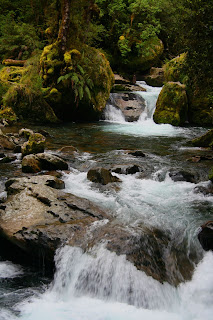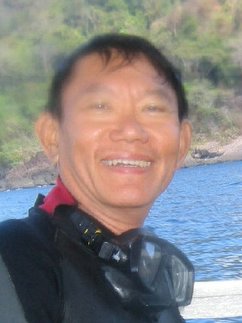




This is a brief account of my recent 6d/5n diving trip, 29 Apr-4 May, to the Similan Marine Park on a liveaboard, the MV Little Princess, departing from the Tab-lamu pier, Phuket.
The highlight of the trip was the close encounters with huge manta rays.
Please click on the following URL to see a well-taken video of a manta-ray. You need to have a facebook account, or else sign up for a free account in order to access the video which was taken recently on 3 May by the instructor/organiser, Nick Khoo, during our trip to the Similan Marine National Park.
http://www.facebook.com/profile.php?id=572539090&v=feed&story_fbid=77988488489#/video/video.php?v=80007467354&ref=nf
Five mantas were counted on the morning dive an Koh Bon, at the site known as the Pinnacle Rock. This was the same place where we dived on 1 May and saw two mantas. Pinnacle Rock on Koh Bon is famous for sightings of mantas, the probability of an encounter is high, elsewhere at the Similan Marine Park you may see one if you are very lucky. However, mantas come here because they can feed on the rich plankton brought about by the strong current that sweeps across the pinnacle. The current was much stronger on 1 May when we had to cling onto rocks and just waited for the mantas to pass us by and circle round. On 3 May the current moderated, thus enabling us to approach the mantas to about 4m. away for close encounters. Those with cameras had a field day clicking furiously away. Visibility was about 12m. at both times.
Though mantas were the highlights, on 2 May, there were other close encounters which were just as memorable. The 1.2m Napoleon (humphead) wrasse and 1.5m great barracuda, whom I approached to within 3m of the denizens, at Koh Tachai were much larger compared to the ones I had seen at Sipadan Island, the largest I have seen so far. The 2m.long leopard shark, encountered on the morning dive at Koh Tachai was the largest too that I have seen. Smaller wonders abound, the more impressive were the pink frog fish and the ghost pipe fish, both types of fish are rarely seen, and easily missed even by experienced divers.
Worthy of mention were the numerous challenging swim-throughs at West of Eden Dive-site No. 7 and Turtle Rock Dive-site No. 8. Several of the swim-throughs, which had moderate currents sweeping across the exits, were good tests of buoyancy skills. (For the uninitiated - swim-throughs are narrow passages in rocks and crevices, like swimming through a tunnel.)
Picture of a Napoleon wrasse is found at:
http://www.richard-seaman.com/Wallpaper/Nature/Underwater/Fish/NapoleonWrasseApproaching1.jpg
Picture of a great barracuda is found at:
http://www.nature.org/animals/fish/animals/barracuda.html
http://www.bubblevision.com/albums/richelieu-rock/pages/giant-barracuda.htm
Picture of a leopard shark is found at:
http://www.divetips.net/wiki/uploads/11/122691299022HnZhJq.jpg
Picture of a pink frog fish is found at:
http://www.coral.org/_164
and a ghost pipe fish at:
http://forum.kapalselam.org/2006/04/06/ghost-pipe-fish-camouflage-rev1/
I have to use other people's pictures as I did not have an underwater camera with me during the trip. Having lost 2 expensive cameras during the last couple of years due to flooding, I have not yet recovered from the phobia of losing cameras.
The 6d/5n liveaboard on MV Little Princess, ex-Phuket, costs RM3000 for food, airport transfers and 4 dives a day (including a night dive daily, except for the last day), a total of 15 dives. However, most of us could not do the 15th dive; because of bad weather the dive-in time had to be postponed. Those of us who had to fly the next day would be taking a risk if we took part in the dive as it was advisable to desaturate nitrogen for at least 24 hours after our last dive to avoid decompression sickness.
The food was excellent Thai cuisine, 3 big meals (breakfast, lunch, dinner) and an afternoon tea. Toasts and non-alcoholic drinks are available throughout the day.
Labels: Diving Sites, Sunset at Anita's Reef





















